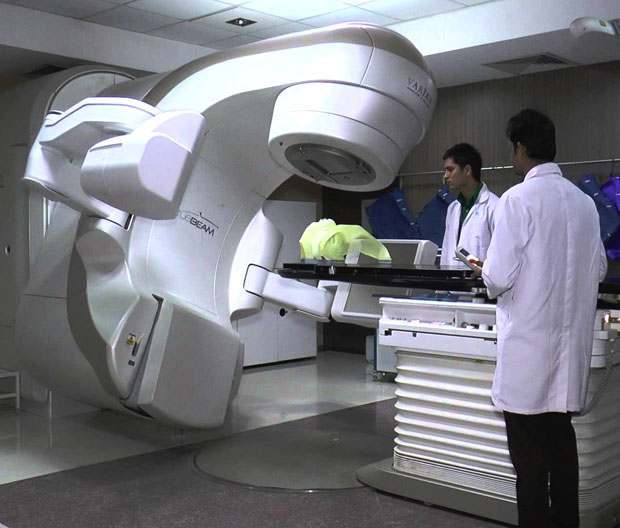Men's Health
09 Sep 2015
There’s so much men can do to improve their health. The good news is most of these recommendations are easy to swallow.
By Edna Cox Rice, RD, CSG, LD

The right nutritional strategies can help any man build and maintain the body he wants. This does not require any special foods, diets, or nutritional supplements; it’s simply a matter of choosing more nutritious, wholesome foods that you may already be consuming. Nutrition choices are important factors in preventing or reducing the risk of developing chronic diseases such as cardiovascular disease, prostate and colon cancer, diabetes and osteoporosis that can impact a man’s health as he ages. The good news is you can start taking charge of your health today! It’s much easier than you think.
Man’s Best Friend - PROTEIN
Protein is important for every cell in our bodies; approximately 15% of body weight is protein. This macronutrient is necessary for many body functions, from building cells in our immune system; providing a source of energy; to building and repairing muscles. How much protein a man needs is determined by several factors, including height, weight, age, activity level and frequency, and exercise goals. The recommendation for the average adult male is 56 grams of protein daily. This is equivalent to 2 eggs at breakfast, 3 ounces of meat, poultry, or fish at lunch and 3 ounces at dinner.
If muscle building is your goal, you may want to increase protein levels above the daily requirements. An active male, 35 years old, 180 pounds, working out 5 times weekly would increase protein intake to one gram of protein per kilogram of body weight [180 lbs. / 2.2 kilograms = 82 kilograms of body weight, which = 82 grams protein every day]. This increased protein intake can be achieved by choosing high quality, lean sources of protein. Follow this plan to reach 82 grams of protein daily: 2 eggs (or other protein sources providing 14-15 gm protein) at breakfast; 4 ounces lean protein at lunch; high protein afternoon snack (non-fat Greek yogurt, cottage cheese, turkey sandwich, walnuts, or almonds) offering 12-15 grams protein; 4 ounces lean protein at dinner. Very active athletes or body builders will need to increase protein slightly more.
Whatever a man’s protein need is, the daily level can be met by eating complete, high quality protein sources: fish 2-3 times weekly; chicken breast or turkey 3-4 times weekly; pork tenderloin or lean chops 2-3 times weekly; limit lean cuts of red meat to no more than 3 servings weekly; eggs 3-4 servings weekly. Typically a serving of fish, poultry, or meat is 4-6 ounces. Other excellent protein sources include: non-fat or low-fat dairy products, milk, cheese, yogurt (Greek yogurt has the highest protein content compared to all other yogurt); legumes including nuts – walnuts, almonds, soy nuts, and beans – black beans, lentils, chickpeas to name a few. Eggs, fish, poultry, meat, milk and cheese provide all of the essential amino acids that make them complete and the most high quality proteins.
Body composition shifts and lean muscle mass decreases gradually being replaced by fat as men age. Thus calorie requirements decline, but protein needs tend to remain the same or are increased to continue to build and maintain muscle. The quality of protein and of other caloric sources takes priority over the quantity. Males age 65 and over should include an average of 70-80 grams protein daily.
Our bodies do not store protein the way we store carbohydrate and fat, so a steady supply of protein is needed every day. Too much protein is usually not a big deal; but eating more protein can mean eating more calories leading to weight gain. Protein from meat and other animal sources may be higher in saturated fat and cholesterol. These two culprits are associated with elevated blood lipids and increased risk for heart disease. Excessive protein consumption may also be a problem associated with other medical conditions including kidney disease and diabetes.
Sports drinks, protein bars and powders, gels, and energy bites may be convenient protein alternatives, but they are not necessary for most men in meeting their daily needs for protein. Real food provides the same and more benefits. Eating more protein will not magically make you stronger. The way to grow muscles is to put them to work and add the right fuel.
Fuel UP
Carbohydrates are the best fuel for working muscles; they are partially converted to glycogen which is stored in muscles to power your work out. All carbohydrates, simple and complex provide a lot of energy. Simple carbohydrate sources are sugar, candy bars, sodas, cookies, and other desserts; they burn fast providing a quick, but temporary energy boost. Slower burning complex carbohydrates such as whole grain breads and cereals, beans, legumes, and starchy vegetables like sweet potatoes sustain energy over a longer period of time.
Men should include at least six servings of complex carbohydrates daily, and possibly more depending on total calories needed daily. For most men, 50-60% of their total calorie needs should come from complex carbohydrates. As with protein needs, assessing caloric needs depends on a man’s height, weight, lean muscle mass, age, and activity level. The following recommendations are a general rule of thumb; a registered dietitian can determine an individual’s specific calorie requirements and customize a plan to meet these needs.
Recommended Daily Calorie Requirements for Men
Ages 19 – 30 2400 calories, Sedentary
2600 calories, Active
3000 calories, Very Active
Ages 31 – 50 2200 calories, Sedentary
2400 calories, Active
2800 calories, Very Active
Ages 51+ 2000 calories, Sedentary
2200 calories, Active
2400 calories, Very Active
A diet rich in complex carbohydrates offers many nutritional benefits. These foods are excellent sources of fiber, important for a healthy gut and protecting against cancer, particularly colon cancer. They are also loaded with B complex Vitamins, Magnesium, and Selenium. This food category consists of whole grain breads, cereal, and pastas; rice, and starchy vegetables – potatoes, sweet potatoes, corn, beans, peas, and lentils. One slice of whole grain bread or a one half cup serving of other grains or starchy vegetables is considered to be one serving.
The above chart reflects how caloric needs decrease with each decade. If a man aged 40-50 maintains the same eating patterns as they followed in their 20s, the end result is frequently gaining excess weight. When incorporating complex carbohydrates in your daily diet, men need to understand the need for portion control and why controlling portions becomes more important over time. The same holds true when it comes to including fats in your diet, even the healthy ones.
FATS: The Good, The Bad, and The Ugly
Be smart about your fat choices. The type of fat and the amount makes the difference. The “Good” fats include olive oil, canola oil, avocados, walnuts, and almonds. They are unsaturated and beneficial for overall heart health, raising the High Density Lipoprotein (HDL) cholesterol (the good kind), and lowering the “bad” stuff, the Low Density Lipoprotein (LDL) cholesterol.
Omega-3 fatty acids are another source of fats with benefits. Fatty fish such as salmon, tuna, mackerel, and herring are excellent sources of the Omega-3s. The recommended intake for men is 500mg of Omega-3 daily, which is equivalent to two- 6 ounce servings of fatty fish each week.
Saturated or “Bad” fats are found primarily in animal foods; red meats, bacon, butter, whole milk, and whole milk products are particularly high in the bad stuff. These fats can raise overall blood lipids (cholesterol and triglyceride levels), increasing the risk of heart disease.
Trans-fats or partially hydrogenated fats can be considered the “Ugly” fats. The latest evidence based research shows these fats can cause clogged arteries as well as increasing cholesterol levels. Commercial baked goods, fried foods, and many snack foods are high in these unhealthiest of fats.
Men need to incorporate some fat in their diets every day to provide the fat soluble Vitamins A, D, and E; dietary fat also provides satiety to a meal. For the typical male, it is recommended that 20-35% of the daily total calories come from fat, with only 10% or less of the fat being saturated fat.
It’s important to keep in mind that regardless of the type of fat – the good, the bad, and the ugly – all fats still have calories. One teaspoon of olive oil (the good stuff), one teaspoon of butter (the bad stuff), or one teaspoon of margarine (the ugly stuff) contain approximately 100 calories; even a small amount of any of these fats quickly adds on calories. Size matters.
Vegetables Aren’t Just for Girls Anymore
The health benefits of eating vegetables and fruits daily are limitless. Because of the high antioxidant load, all veggies are heart healthy and beneficial in reducing the risk for diabetes. Broccoli, asparagus, sweet potatoes, and other deep green or yellow vegetables and fruits provide the highest antioxidant load.
Want to boost your brain power? Eat your broccoli, carrots, corn, and beans, the best sources of soluble fiber helpful in lowering cholesterol and blood lipid levels that may cause plaque build-up in the brain.
Peppers (yellow, green and roasted red peppers) offer the best bang of Vitamin C for your bite. One half cup of peppers exceed the recommended daily dose of Vitamin C. Vitamin C is involved in many body functions and processes; it boosts the immune system; is instrumental in wound healing; helps the body fight infections; and is linked to reducing the risk of some forms of cancer.
The most common cancer in American men is prostate cancer. Annually, 220,000 men are diagnosed with this disease and approximately 27,000 deaths are attributed to this this form of cancer. Vitamin A, E, and the phytochemical lycopene help to decrease the risk of developing this form of cancer. Fruits and vegetables with a deep red color, such as tomatoes and watermelon, are rich sources of lycopene, Vitamins A and C. All cruciferous vegetables like broccoli, cauliflower, and cabbage are also excellent sources of Vitamins A, C and other cancer fighting phytochemicals.
The daily goal for men is to consume at last two and one half to three servings of vegetables and two servings of fruit daily. A serving is one piece of small to medium sized fruit; one half cup vegetables and most fruits; one cup of fruits like berries and melons.
If you think you are covering your daily vitamin and mineral requirements by popping a multivitamin supplement, think again. Phytochemicals such as antioxidants and dietary fiber don’t make it into a pill. There is no substitute for eating whole fruits and vegetables every day.
Booze, Beer, and Bellies
Alcohol of any kind – beer, wine, or spirits – is recommended in moderation. Over consumption is linked to chronic disease including heart disease, diabetes, poor bone health, a decreased immune system, liver and kidney disease.
The American Journal of Clinical Nutrition sites the following statistics: men consume an extra 450 calories on days they have just a couple of drinks. The calories, in part are due to the alcohol consumption, but also due to lowered inhibitions and drink fueled munchies.
Increased abdominal girth is associated with alcohol intake. Beer drinkers, especially as they get older, tend to grow bellies. Not because of the beer, but because of overall consumption of too many calories. One beer is about 150 calories; several in one sitting can result in serious calorie overload. But beer drinkers don’t stop there; they add on more calories from indulging in the foods most often eaten with beer consumption – pizza, wings, and other fried foods. One of these beer drinking and munchie sessions could exceed the amount of total calories needed in one day just to maintain weight. Drinking less alcohol is a good start for a weight reduction plan.
Recommendations for alcohol consumption for men:
No more than 2 drinks per day
One drink = 12 ounces beer
5 ounces wine
1.5 ounces, 80 proof spirits
Men over age 65 should drink no more than 1 drink per day.
Small Changes Make a Big Difference
Losing just 5 to 10% of your starting weight can dramatically reduce the risk of developing diabetes and other chronic diseases. When men include a variety of wholesome, real foods from all food groups they attain all the nutrients and antioxidants to fight disease and optimize overall health and nutritional status.











